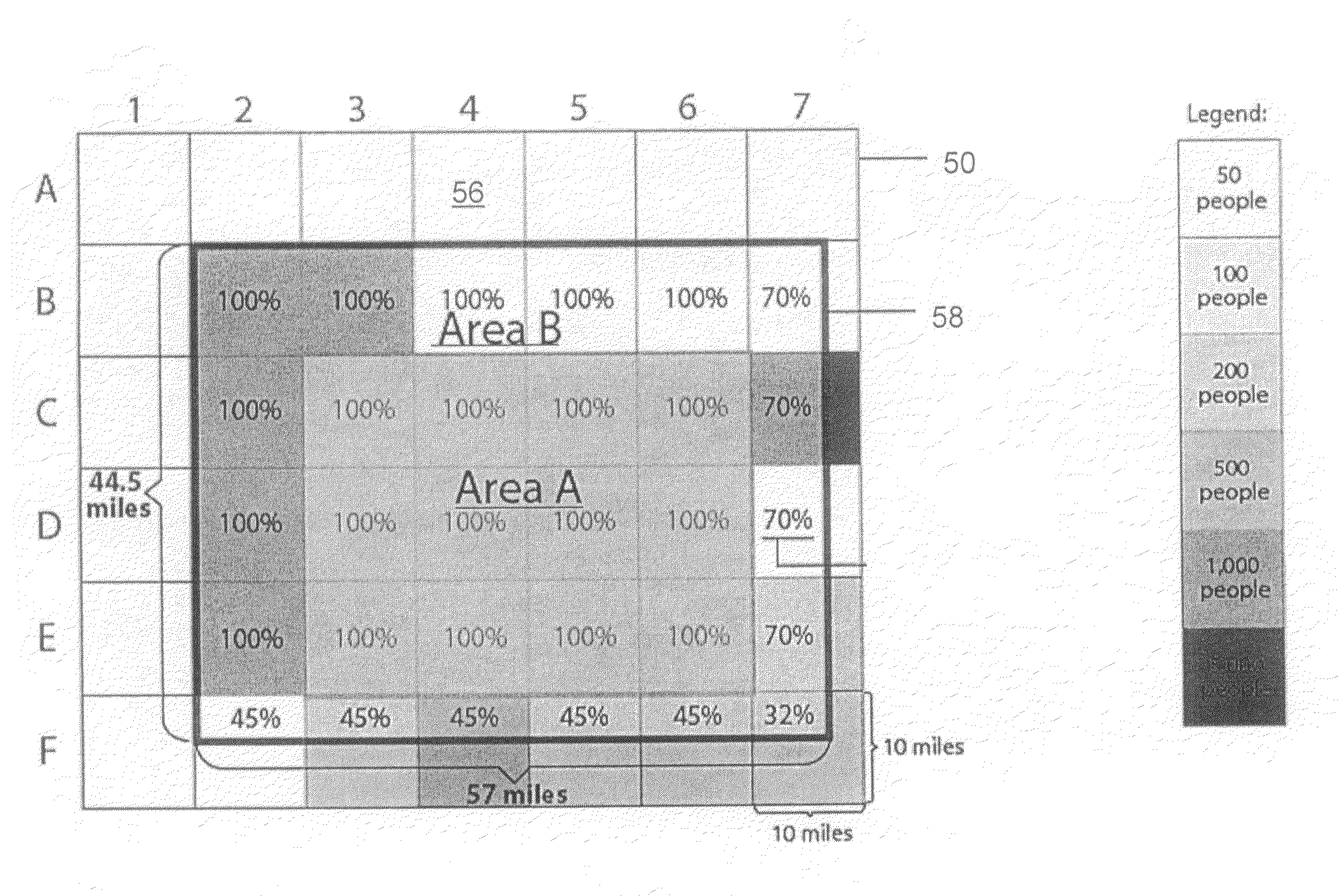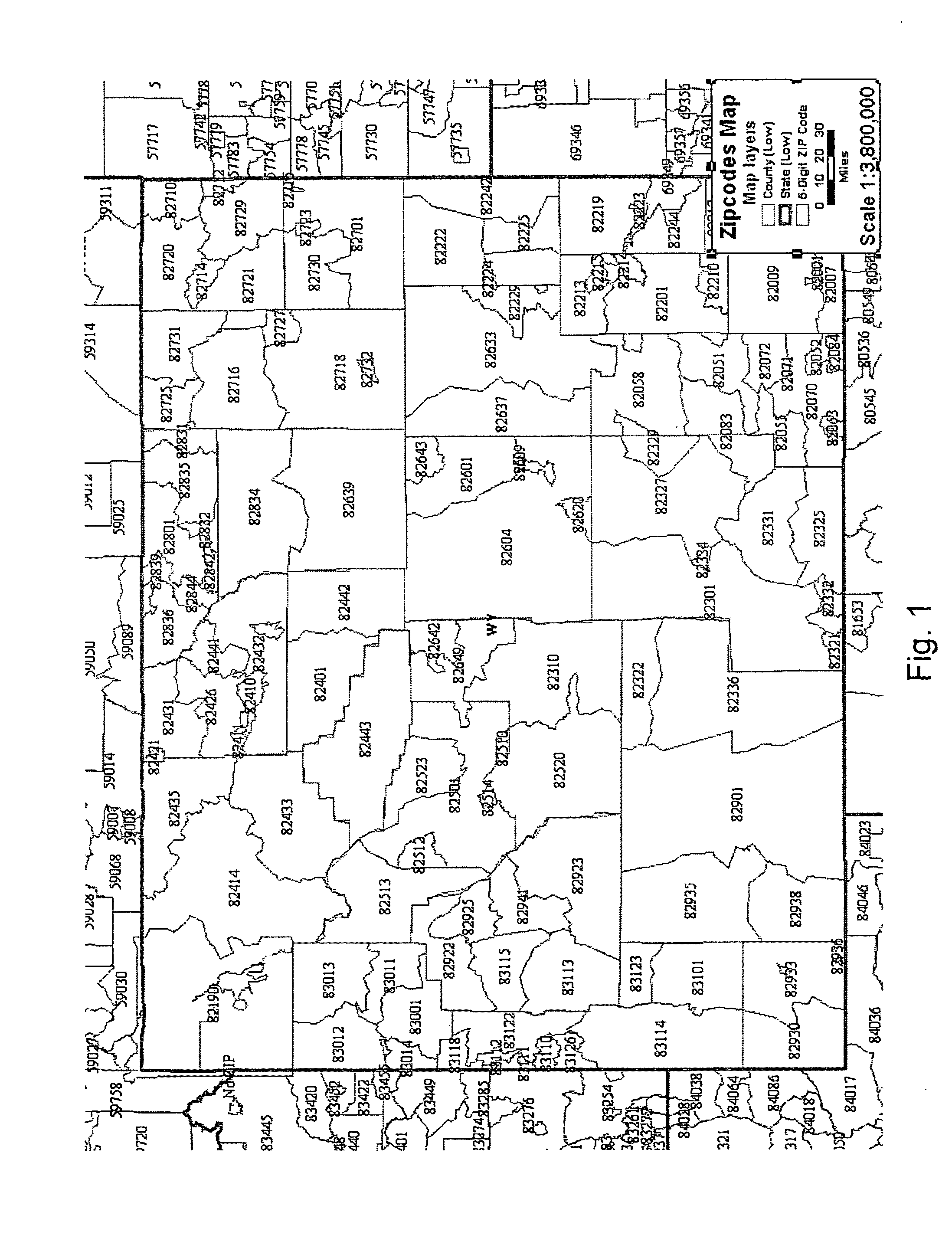Adaptive map layer visibility control
a map layer and visibility control technology, applied in maps/plans/charts, instruments, computing, etc., can solve the problems of regions not displaying optimally, users would have a very difficult time locating tracts in the state of wyoming
- Summary
- Abstract
- Description
- Claims
- Application Information
AI Technical Summary
Benefits of technology
Problems solved by technology
Method used
Image
Examples
Embodiment Construction
[0030]Various non-limiting embodiments disclosed herein disclose methods and related systems that provide adaptive scaling to allow map designers or users of interactive mapping systems to control the scale at which a layer will be turned on or turned off based upon a visibility value computed from data within the area being viewed. If, for example, the user is looking at Wyoming, one set of optimal scales would apply, whereas another set of optimal scales would apply for New York City. As a result, the map view is optimized for the region being viewed.
[0031]In various embodiments, a visibility value is used to determine when a layer is turned on or off. The visibility value may be computed, for example, using either geographic density (such as features per unit area), population density (object instances per unit area), an absolute count value of the features present in the current view, or any other suitable function of features or data present within the current view. Therefore, ...
PUM
 Login to View More
Login to View More Abstract
Description
Claims
Application Information
 Login to View More
Login to View More - R&D
- Intellectual Property
- Life Sciences
- Materials
- Tech Scout
- Unparalleled Data Quality
- Higher Quality Content
- 60% Fewer Hallucinations
Browse by: Latest US Patents, China's latest patents, Technical Efficacy Thesaurus, Application Domain, Technology Topic, Popular Technical Reports.
© 2025 PatSnap. All rights reserved.Legal|Privacy policy|Modern Slavery Act Transparency Statement|Sitemap|About US| Contact US: help@patsnap.com



